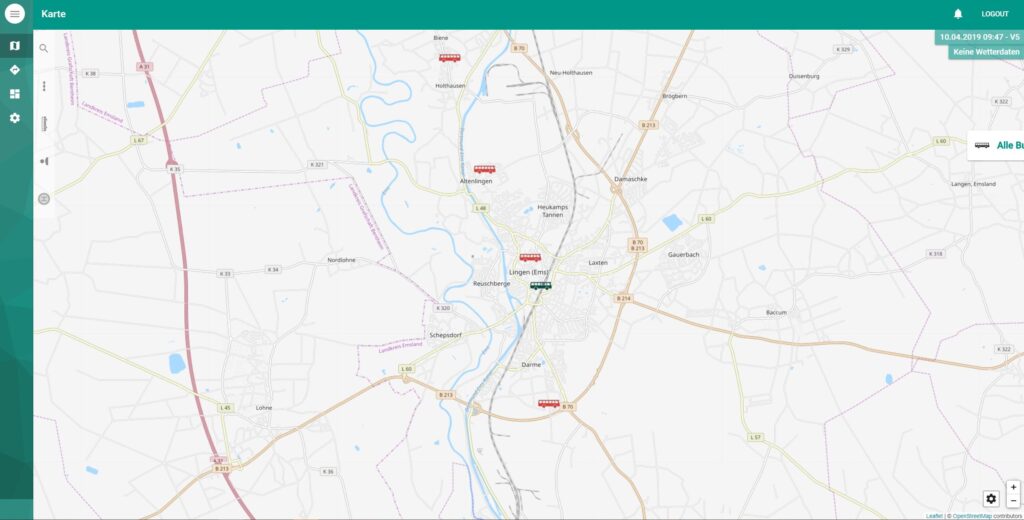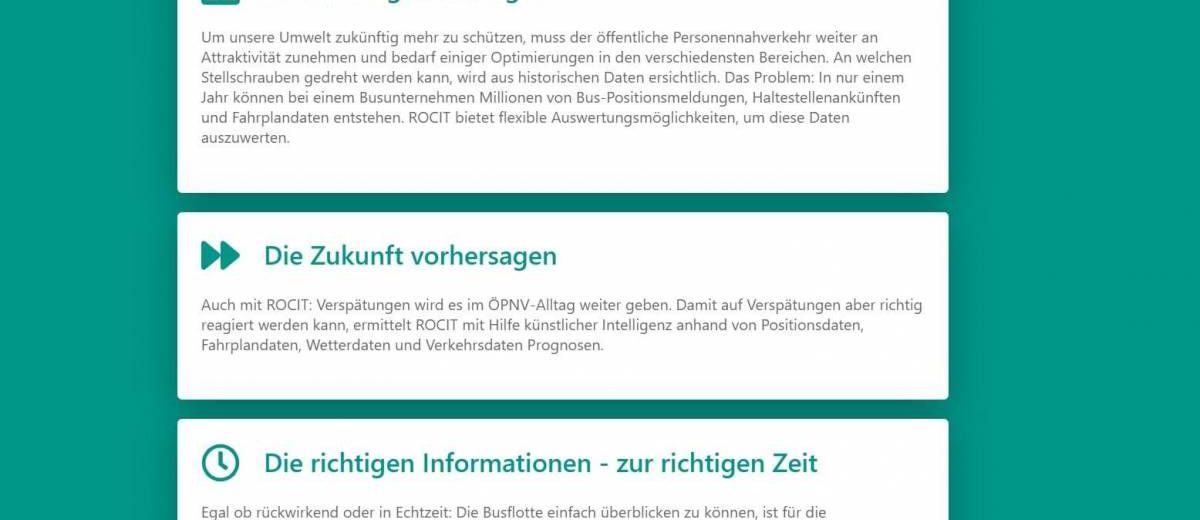Improved real-time map of the information platform for bus companies
The ROCIT project group at the University of Oldenburg has been working since September 2019 on their information management system, designed to make work easier for bus operators and improve delay forecasts. Environmental factors, events, and weather are also to be taken into account.
Due to the current situation, the quarterly presentation was once again held as a video conference via Microsoft Teams. In this blog post, we present the current project status and also had a chat with our CEO Olaf Clausen about why he finds the project so interesting and what improvements it brings for German bus operators and, consequently, for the passengers.
New Features on the Real-Time Map
Since the mid-year presentation and the introduction of the information management system to bus operator Thomas Terfloth at the end of February, the project group has implemented a number of new features in the real-time map. The real-time map now not only shows the routes of individual buses but also displays the speed of the vehicles. In general, visual improvements have been made to the direction indicators of buses and routes, and the highlighting of resources is now more prominent in the display. Additionally, there is a historical view of delays, and a custom map style provides a distinctive look and feel for the application.
How will things proceed until completion in September?
Currently, the group is still gathering feedback from the project supervisors at the university as well as from the AMCON team. Our training manager Rolf Norrenbrock, bus project manager Alex Mut, managing director Olaf Clausen, and some colleagues from sales are now testing the application and providing suggestions and ideas. Over the next three months, the project group will continue optimizing the bus delay prediction system and will also have further discussions with the bus operators Terfloth and Breitenbach. Besides the documentation, which is also part of the project, the final presentation will take place in September in front of the VLBA department at the University of Oldenburg, the involved bus companies, and AMCON.
#AMCONInside – Olaf explains how predictions have been made so far and what improvement potential ROCIT brings to make public transport even more attractive for passengers:
“So far, the prediction of arrival times at the next stops only takes into account the current delay – that is, the delay with which the bus departed from the last stop. If we had the data, we could also include the remaining route of a bus. However, this requires the exact routes of the buses. Most bus companies do not have this data, so we and our competitors can only use the current delay. It would, however, be desirable to consider additional factors, such as the weather or the current traffic situation during major events, to optimize the forecasts. That is why we are very impressed by the work of the ROCIT project group. Delays are often a reason why passengers are dissatisfied with public transport and prefer to switch to cars instead. We are convinced that improved forecasts would fundamentally increase passenger satisfaction if they can rely on them and are shown alternative routes that allow them to arrive on time. Only then can a real traffic transition succeed and mobility in Germany be sustainably changed.”
More about ROCIT at https://rocit.space/


